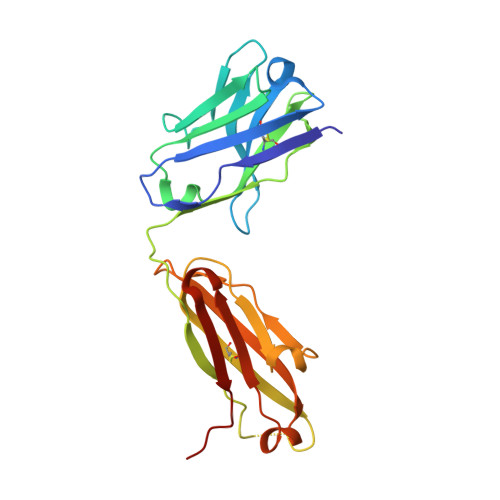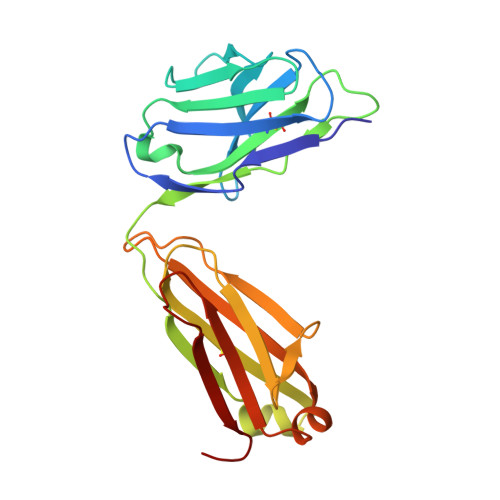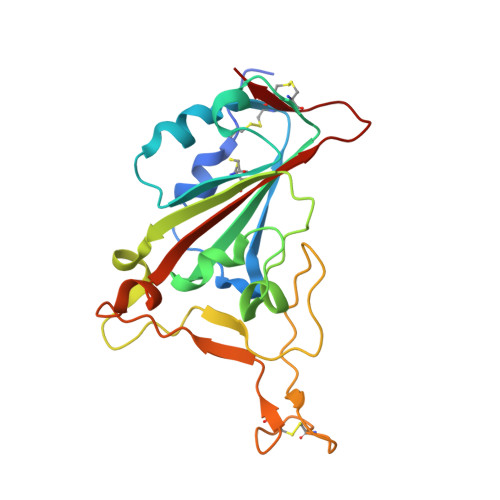Reduced neutralization of SARS-CoV-2 B.1.1.7 variant by convalescent and vaccine sera.
Supasa, P., Zhou, D., Dejnirattisai, W., Liu, C., Mentzer, A.J., Ginn, H.M., Zhao, Y., Duyvesteyn, H.M.E., Nutalai, R., Tuekprakhon, A., Wang, B., Paesen, G.C., Slon-Campos, J., Lopez-Camacho, C., Hallis, B., Coombes, N., Bewley, K.R., Charlton, S., Walter, T.S., Barnes, E., Dunachie, S.J., Skelly, D., Lumley, S.F., Baker, N., Shaik, I., Humphries, H.E., Godwin, K., Gent, N., Sienkiewicz, A., Dold, C., Levin, R., Dong, T., Pollard, A.J., Knight, J.C., Klenerman, P., Crook, D., Lambe, T., Clutterbuck, E., Bibi, S., Flaxman, A., Bittaye, M., Belij-Rammerstorfer, S., Gilbert, S., Hall, D.R., Williams, M.A., Paterson, N.G., James, W., Carroll, M.W., Fry, E.E., Mongkolsapaya, J., Ren, J., Stuart, D.I., Screaton, G.R.(2021) Cell 184: 2201
- PubMed: 33743891
- DOI: https://doi.org/10.1016/j.cell.2021.02.033
- Primary Citation of Related Structures:
7NEG, 7NEH - PubMed Abstract:
SARS-CoV-2 has caused over 2 million deaths in little over a year. Vaccines are being deployed at scale, aiming to generate responses against the virus spike. The scale of the pandemic and error-prone virus replication is leading to the appearance of mutant viruses and potentially escape from antibody responses. Variant B.1.1.7, now dominant in the UK, with increased transmission, harbors 9 amino acid changes in the spike, including N501Y in the ACE2 interacting surface. We examine the ability of B.1.1.7 to evade antibody responses elicited by natural SARS-CoV-2 infection or vaccination. We map the impact of N501Y by structure/function analysis of a large panel of well-characterized monoclonal antibodies. B.1.1.7 is harder to neutralize than parental virus, compromising neutralization by some members of a major class of public antibodies through light-chain contacts with residue 501. However, widespread escape from monoclonal antibodies or antibody responses generated by natural infection or vaccination was not observed.
Organizational Affiliation:
Wellcome Centre for Human Genetics, Nuffield Department of Medicine, University of Oxford, Oxford, UK.






















